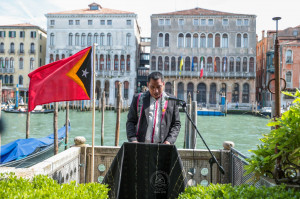Prime Minister inaugurates Timor-Leste Pavilion in the Venice Biennale

Prime Minister Kay Rala Xanana Gusmão, accompanied by the Minister of Youth, Sports, Art and Culture, Nelyo Isaac Sarmento, and the Secretary of State for Art and Culture, Jorge Soares Cristovão, inaugurated the Timor-Leste Pavilion at the 60th edition of the Venice Biennale, on April 19th, 2024, in Italy. 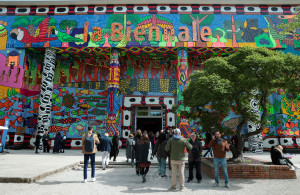
The Biennale, which will run until November 24th, 2024, has the participation of 90 nations, including Timor-Leste, exhibiting for the first time at this prestigious world art event. Migration, the notion of identity, and wars mark the exhibitions at the world's largest contemporary art show, whose theme this year is “Foreigners everywhere”. 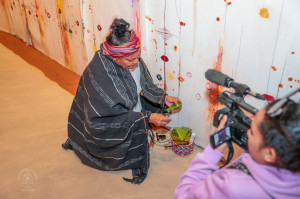
The Timor-Leste exhibition, entitled “Kiss and Don't Tell” by artist Maria Madeira, pays homage to the strength and resilience of Timorese women during the Indonesian occupation. The pavilion features large-scale works in “tais” (traditional Timor-Leste woven fabrics) printed with betel nut marks, natural pigments and a performance that explores “trauma, hope and healing”. In addition to the main work, measuring around 25 square metres, various forms of artistic expression are presented, such as installations, videos and performances. 
Numerous tourists and Timorese attended the opening ceremony, as well as diplomats, including Timor-Leste's Ambassador to the Vatican, Chloé Silvia Tilman Dindo, and Ambassador to Brussels, Jorge Trindade Camões, among other important representatives.
The Prime Minister, Kay Rala Xanana Gusmão, in his speech, expressed his “pride” and “special privilege” in “inaugurating Timor-Leste's first exhibition at the Venice Biennale”, “twenty-five years after the Timorese people voted in a United Nations-sponsored referendum to restore independence”. 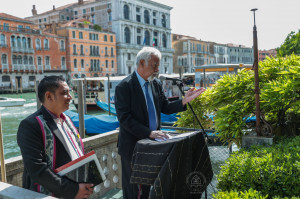
“It was our distinct culture and heritage that united the Timorese during our resistance struggle and fuelled our dreams of freedom”, and “since independence, our culture and our narratives have been an integral part of our peacebuilding and state-building efforts,” said Xanana Gusmão.
The Head of Government also said that “the time has come to promote our culture to the world” and that “art can't just be about the past—it must also embrace the future and the potential of our country.”
Xanana Gusmão emphasised that “stories of occupation can be difficult to tell”, “yet Maria Madeira manages to capture the darkness of war, as well as the power of reconciliation and the possibilities of hope”. “Maria Madeira's art incorporates the timeless traditions of our people into contemporary works of truth and beauty.” 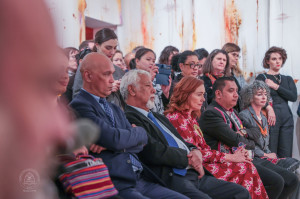
He ended his speech by expressing his certainty that “this exhibition will be an inspiration for Timorese artists and will promote the development of contemporary art” and that “although this is the first time our country is participating in the Venice Biennale, we hope to take part in many more exhibitions in the future so that we can celebrate our nation and share our stories with the world”. 
The Secretary of State for Art and Culture, Jorge Soares Cristovão, emphasised the importance of this moment for the country and reiterated the Timor-Leste Government's commitment to promoting art and culture as pillars of national development. He also thanked the Prime Minister for the trust in the team and the artist Maria Madeira, emphasising the potential of this participation to boost tourism and the country's creative economy. 